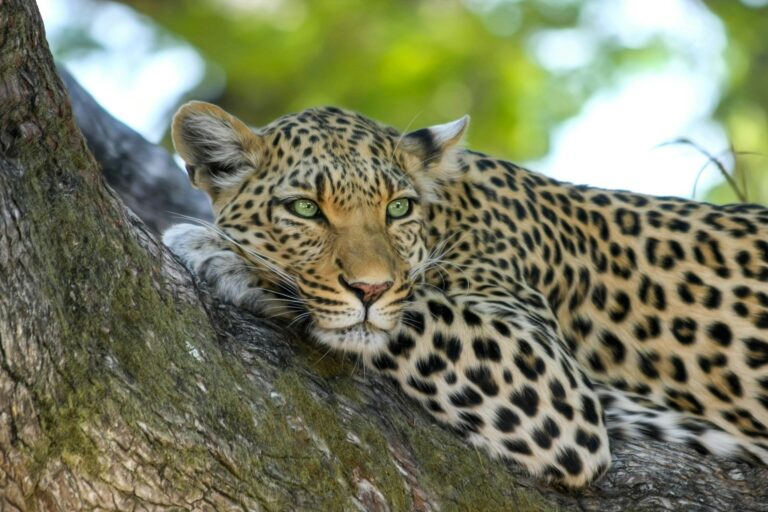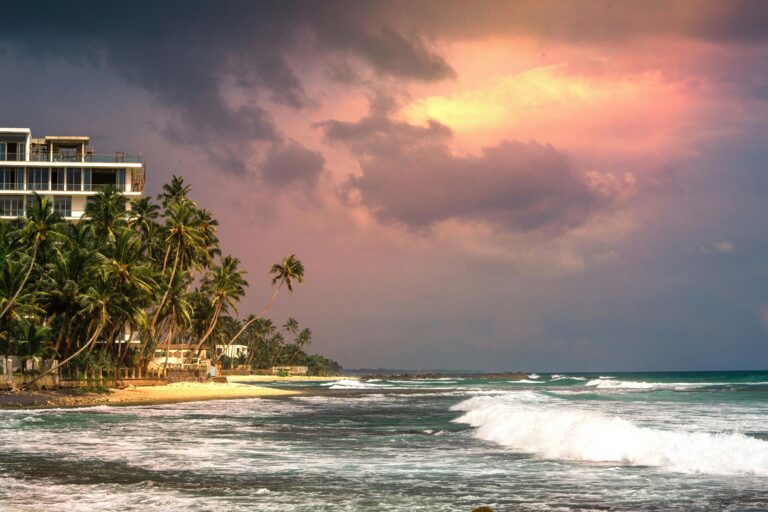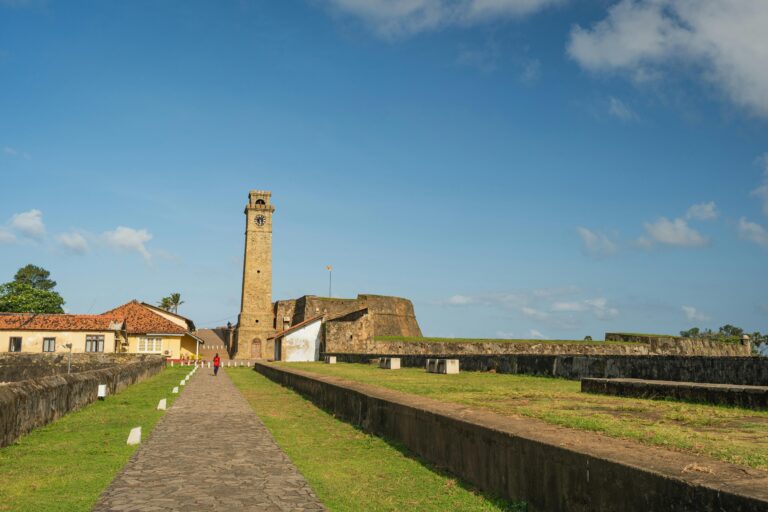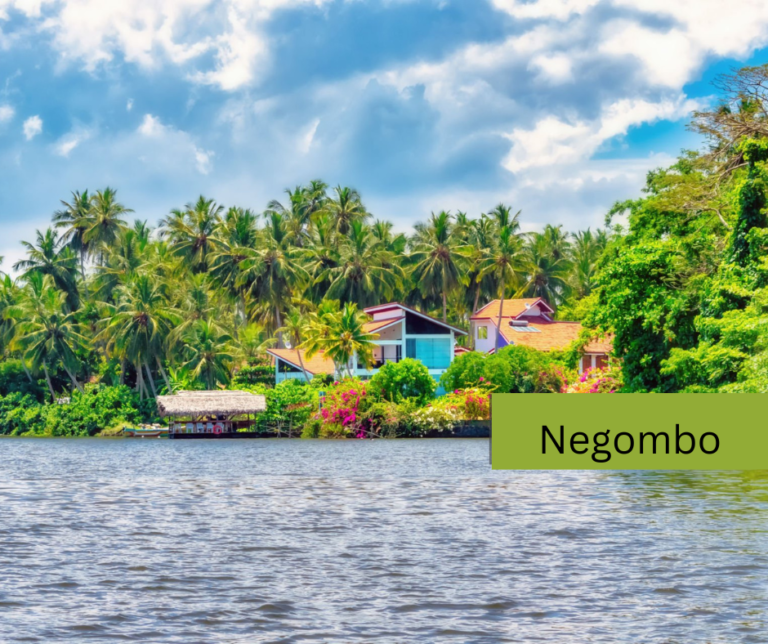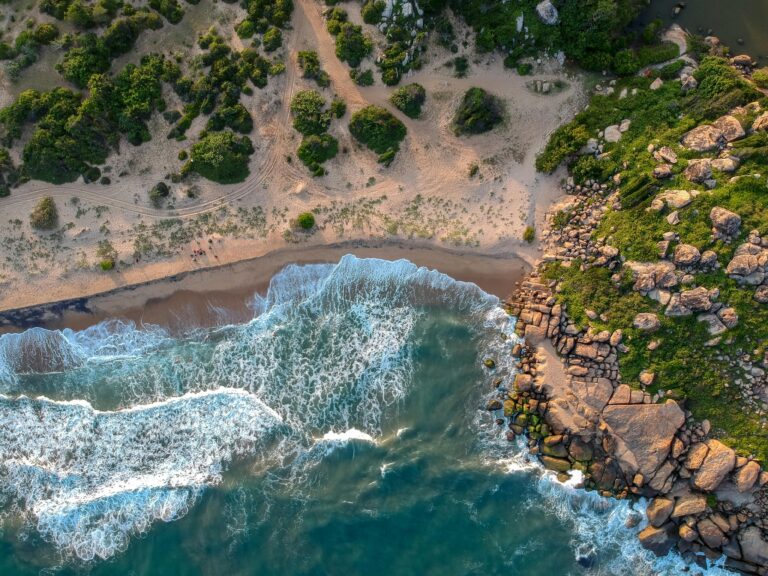
Negotiate the cold winter for Sri Lanka’s sunkissed beaches and lush mountains. During the 15 adventure-packed days, you will see the sights and natural beauties of this magical treasure of the Indian Ocean, from its highland tea farms to its golden southern coastlines. In between, there will be visits to historic cities, jungle safaris, cave temples, swimming at lovely waterfalls, whale watching, and much more.
Highlights
On Sri Lanka’s coast, go kitesurfing and whale watching.
Visit the famous ruins of Anuradhapura, Sri Lanka’s ancient capital.
Take a hike to cave monasteries and rock fortifications on the northern plains.
Swim in waterfalls and hike through highland rainforests.
Visit elephant rescue centers and Dutch colonial cities.
Brief Itinerary
Day | Highlights | Overnight |
|---|---|---|
| Day 1 | Arrive in Colombo, City Tour by Tuk-Tuk | Colombo |
| Day 2 | Colombo to Kalpitiya, Kitesurfing Adventure | Kalpitiya |
| Day 3 | Dolphin Spotting at Kalpitiya, Jungle Safari in Wilpattu | Kalpitiya |
| Day 4 | Kalpitiya to Anuradhapura, Walking Tour & Meditation at Mihintale Rock | Anuradhapura |
| Day 5 | Anuradhapura to Habarana, Forest Monastery & Cave Temples | Habarana |
| Day 6 | Trek to Pidurangala, Village Cycling Tour, Explore Polonnaruwa | Habarana |
| Day 7 | Habarana to Kandy, Sigiriya Rock Fortress & City Tour | Kandy |
| Day 8 | Kandy to Adam’s Peak, Visit Tea Plantation & Ambuluwawa Tower | Adam’s Peak |
| Day 9 | Sunrise at Adam’s Peak, Transfer to Ella | Ella |
| Day 10 | Visit Nine Arches Bridge & Ravana Falls | Ella |
| Day 11 | Ella to Sinharaja, Hike Diyaluma Falls, Visit Elephant Rescue Center | Sinharaja |
| Day 12 | Rainforest Trek, Transfer to Ahangama | Ahangama |
| Day 13 | Whale Watching in Mirissa | Ahangama |
| Day 14 | Ahangama to Galle, Visit the Dutch Fort | Galle |
| Day 15 | Galle to Colombo, Depart |
Detailed Itinerary
Day 1: Arrive in Colombo, City Tour
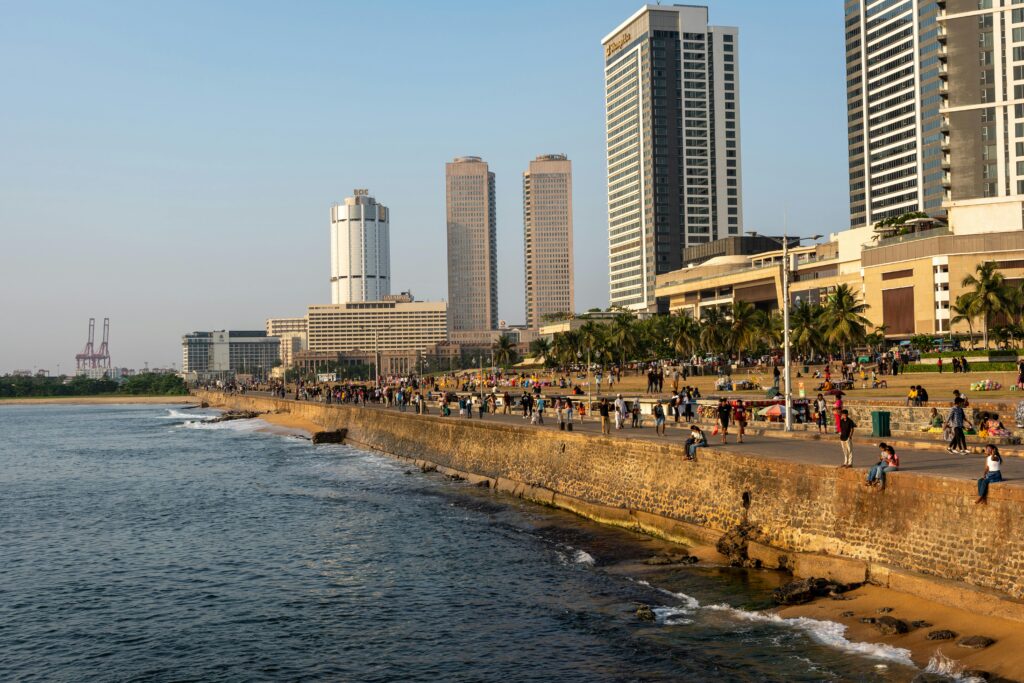
Welcome to Colombo, the capital of Sri Lanka. Approximately 20 million people reside on this beautiful island off the southernmost tip of India, and the country boasts a rich history dating back to the first emergence of the Sinhala Kingdom in 543 BCE. Over centuries, the nation was ruled by hundreds of kings, as well as by the Portuguese, Dutch, and British. But in 1972 it broke free from the bonds of British colonial control to establish an independent republic. Travelers have since discovered Sri Lanka’s rich Buddhist culture, amazing coastline, and untainted natural beauty.
Day 2: Colombo to Kalpitiya, Kitesurfing
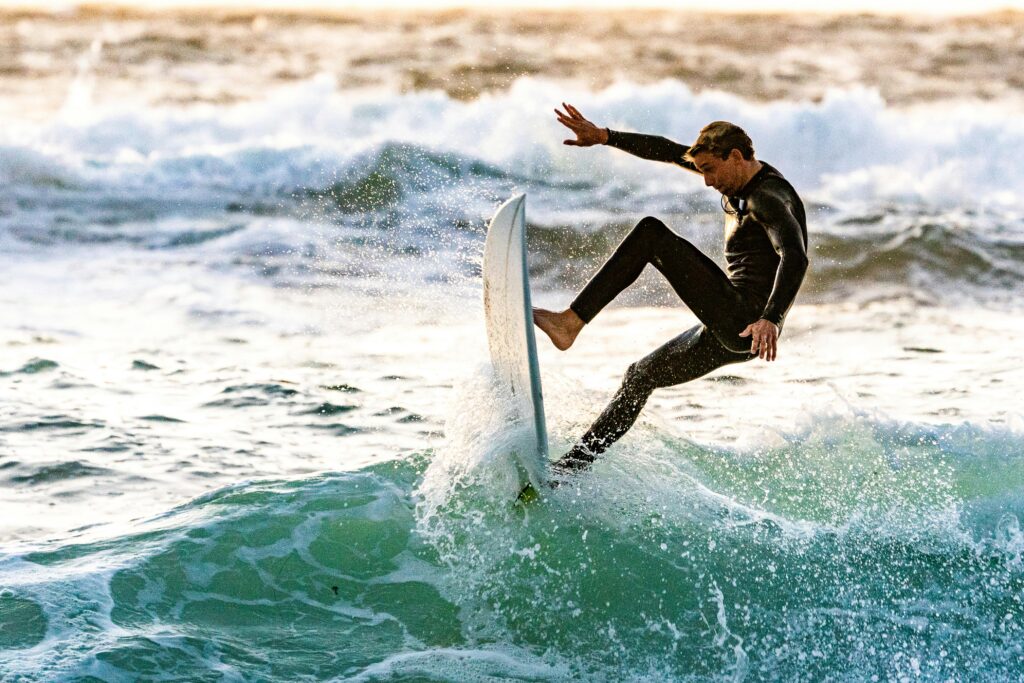
You will drive three and a half hours along the coast of Sri Lanka in the morning to Kalpitiya, where you will spend the next few nights. Kalpitiya, a peaceful fishing community and group of fourteen pristine islands off a peninsula that, despite its beauty, stays off the main path, is situated in the Puttalam district of northwest Sri Lanka. Those who find this laid-back seaside village fall in love with its golden sunsets and lengthy beaches. In both winter and summer, it ranks among the top kitesurfing spots in Asia.
The large sandbars separating the inside lagoons from the Indian Ocean make the surroundings perfect. From December to March, winds peak at roughly 20; in the high season (May–October), you can expect winds of up to 28 knots. Even if you’re not a seasoned kitesurfer, there’s no reason to panic; today is open to all ability levels, and there are classes if this is your first time. Having as much pleasure as possible is today’s sole objective.
Day 3: Dolphin Spotting at Kalpitiya, Safari in Wilpattu
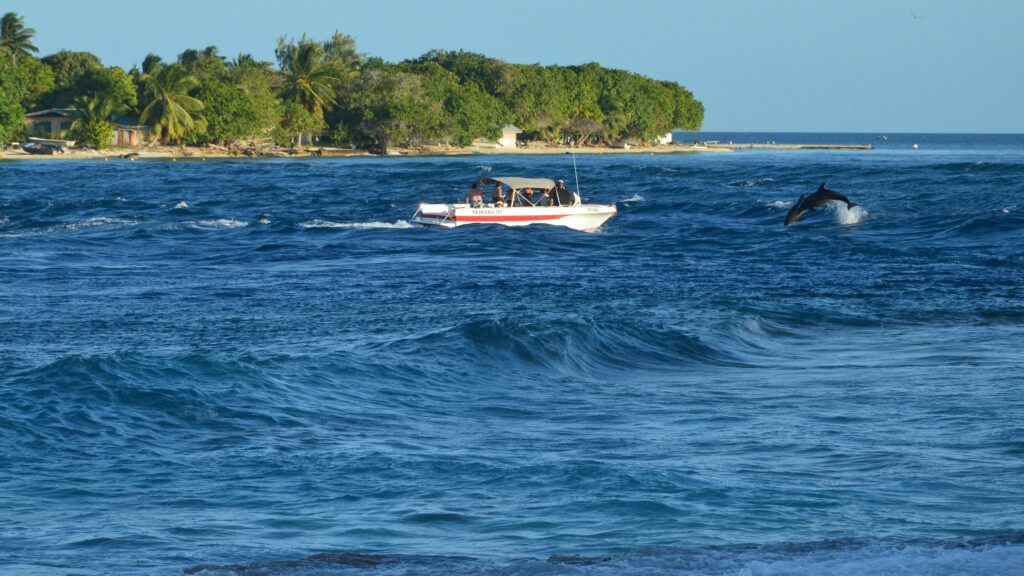
Big dolphin pods abound in the seas around the Kalpitiya peninsula. You will go out on a boat trip today to see this amazing aquatic life in its natural surroundings. The most often seen ones on these trips are spinner dolphins, named for their inclination for underwater acrobatics. You will definitely see groups of these animals jumping out of the lake and performing—so keep your camera ready. If luck favors you, the boat might even pass by a whale or two.
Day 4: Kalpitiya to Anuradhapura & Meditation at Mihintale Rock
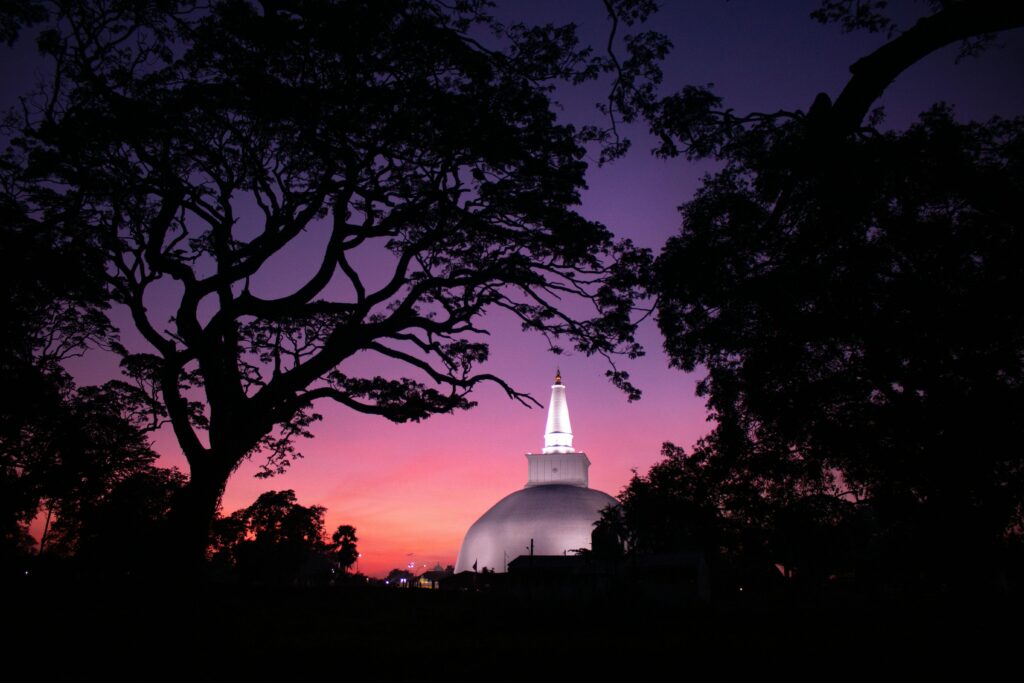
After breakfast in Kalpitiya, travel two hours to the UNESCO World Heritage Site of Anuradhapura. At first glance, the ruins of Sri Lanka’s first and oldest capital city, nestled among modernism, may resemble numerous tiny villages in South Asia. Several kingdoms ruled Anuradhapura, one of the world’s longest continuously inhabited towns, from the 4th to the 11th century CE for 1,500 years. Even now, it still embodies the core of Sri Lanka’s Buddhist tradition, with several pilgrimage sites and wonders to explore.
Discover the oldest Buddhist shrines on a tour of ancient Anuradhapura; some of them go back to the third century BCE. You will also see monasteries, temples, white dagobas—mound-shaped stupas—and finely carved monuments. The early occupants of the city invented a historic irrigation system of reservoirs and canals due to the city’s arid northern location. Make sure to visit Sri Maha Bodhi, the oldest human-planted tree on Earth, which dates back to 288 BCE. This sacred fig tree was created from a branch of the Bodhi Tree in India, where Buddha attained enlightenment.
Day 5: Anuradhapura to Habarana, dambulla Cave Temples

You leave Anuradhapura early in the morning for a one-hour trip southeast to reach the little city of Habarana. This one is a popular base for nearby wildlife excursions into the lake and forest. On the route, though, you will stop at several amazing ancient sites within nature reserves.
First, a two-hour visit to the Ritigala Forest Monastery. The monastery is located to the east of Ritigala Mountain, which stands at 2,513 feet (766 m) above sea level in northern Sri Lanka. Myths envelop the mountain itself; most famously, a special herb, capable of extending lifetime and healing all suffering, grows close to the peak. According to legend, this herb is guarded by Yakkas, mountain spirits. Built in the first century BCE, the monastery here boasts remnants of stone paths, bridges, ceremonial baths, an entry complex, a hospital, and meditation rooms.
Day 6: Pidurangala, Village Cycling Tour, go to Polonnaruwa

Sigiriya, the nation’s most famous monument, is located south of Habarana. You will visit this very popular tourist destination, a historic fortification located atop a granite mountain. First, though, you’ll tour Pidurangala, another granite monolith some miles from Sigiriya. King Kashyapa I relocated the Buddhist monastery to Pidurangala when Sigiriya became his fortress capital in the fifth century CE. The monastery still stands; early in the morning, you will pass by it on an optional 45-minute climb to the summit of the cliff, where you will have breakfast among breathtaking scenery.
Day 7: Habarana to Kandy, Sigiriya Rock Fortress
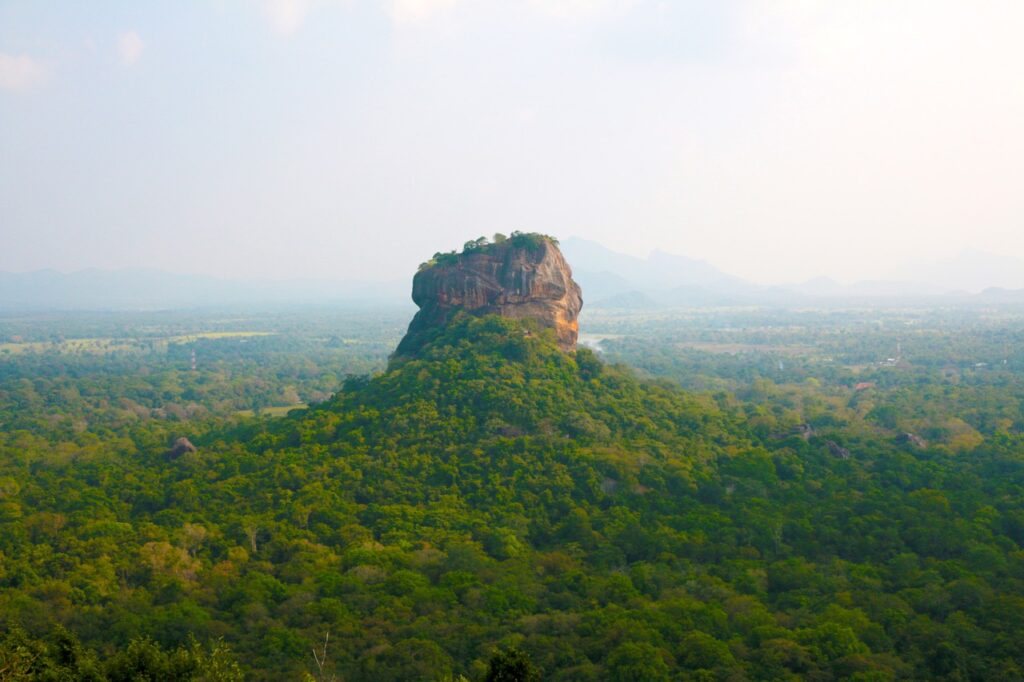
Today you’ll go to Sigiriya, an old castle that stands 1,144 feet (349 m) tall on top of a single block of granite. This is not only a UNESCO World Heritage Site, but it’s also the most amazing man-made feature in the country. King Kashyapa, the ruler of the Sinhalese Kingdom, built it in the late 5th century CE. Because the entrance lies between two enormous, rock-hewn lion paws, it is also known as the “Lion Fortress”. It takes 1,200 granite steps to get to the castle. Bright pictures paint the rock walls as the steps ascend. There are parks, fortifications, esplanades, and stunning views of the plains all around.
After seeing Sigiriya, take the road south to Kandy, a city in the hills. You’ll stop on the way to the city of Matale, which is 2.5 hours away. A guide will take you around the National Spice Park, featuring a botanical park and a spice bazaar. A walk through the fragrant gardens gives you an intriguing look into the history, plants, and food of Sri Lanka. Sri Lankan cuisine celebrates the smells and tastes of ingredients like chocolate, vanilla, pepper, clove, cinnamon, cardamom, and nutmeg.
Day 8: Kandy to Adam's Peak, Ambuluwawa Tower, Visit Tea Plantation

The mountains in the middle of Sri Lanka have the perfect weather for growing tea. Throughout these undulating green hills, various farms cultivate these tea leaves. You will begin your walk around the 19-acre Loolcondera Estate grounds in the morning. In 1867, Scotsman James Taylor started the country’s first tea plantation at this famous site. After the walk, you’ll hike up to Kondagala Rock. At the top, sit back with a hot cup of tea and some cookies and enjoy the beautiful views of the mountains all around you.
The mountain theme continues when you see Ambuluwawa Tower, which is one of the most famous sights in the area. You will reach the old town of Gampola. Then, take a 15–25-minute tuk-tuk ride up through beautiful evergreen woods and flowering creeper vines to get to this important religious site, which is 3,567 feet (1,087 m) above sea level. For those brave enough, there is a 157-foot (48 m) climb up a tight spiral staircase that leads to the top of the tower. From there, you can see stunning views of the countryside.
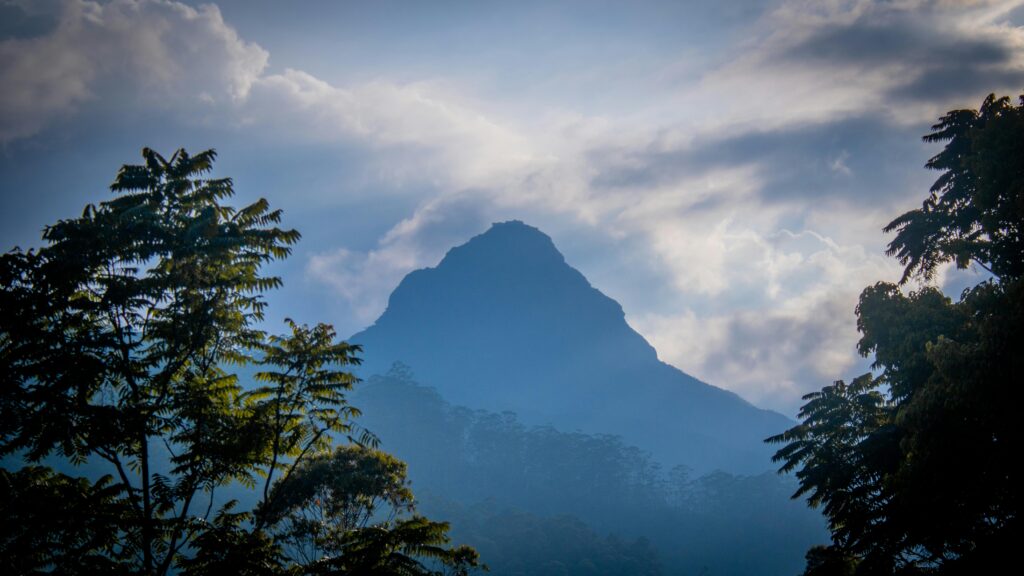
At about 2 a.m., get up early and start going up the 5,500 steps that lead to the top of the mountain. This is a challenging walk, but most people can finish it in three hours. The small temple at the top should always be reached in time to see the mountain sunrise. The holy footprint resides here. There will be many interesting sights along the way, such as Buddhist stupas, temples, and statues. There will also be shops and stands selling water and snacks. There will also be a large number of hikers and tourists accompanying you on the road, creating a joyful, celebratory atmosphere with plenty of singing.
Day 10: Nine Arches Bridge & Ravana Falls

There is a Sri Lanka Railway line that runs through the central mountains’ green hills. The Nine Arches Bridge, which is between the Ella and Demodara stops, is another amazing piece of Sri Lanka’s history. In 1921, the British funded the construction of this “bridge in the sky”. Brick and cement made up its entirety. This is a wonderful example of colonial engineering. DJ Wimalasurendra, a Sri Lankan engineer, designed it. Today, you’ll go on a one-hour tour to see this landmark. It’s 300 feet (91 m) long and 80 feet (24 m) high, rising above the jungle and farmlands.
Day 11: Ella to Sinharaja, Hike Diyaluma Falls
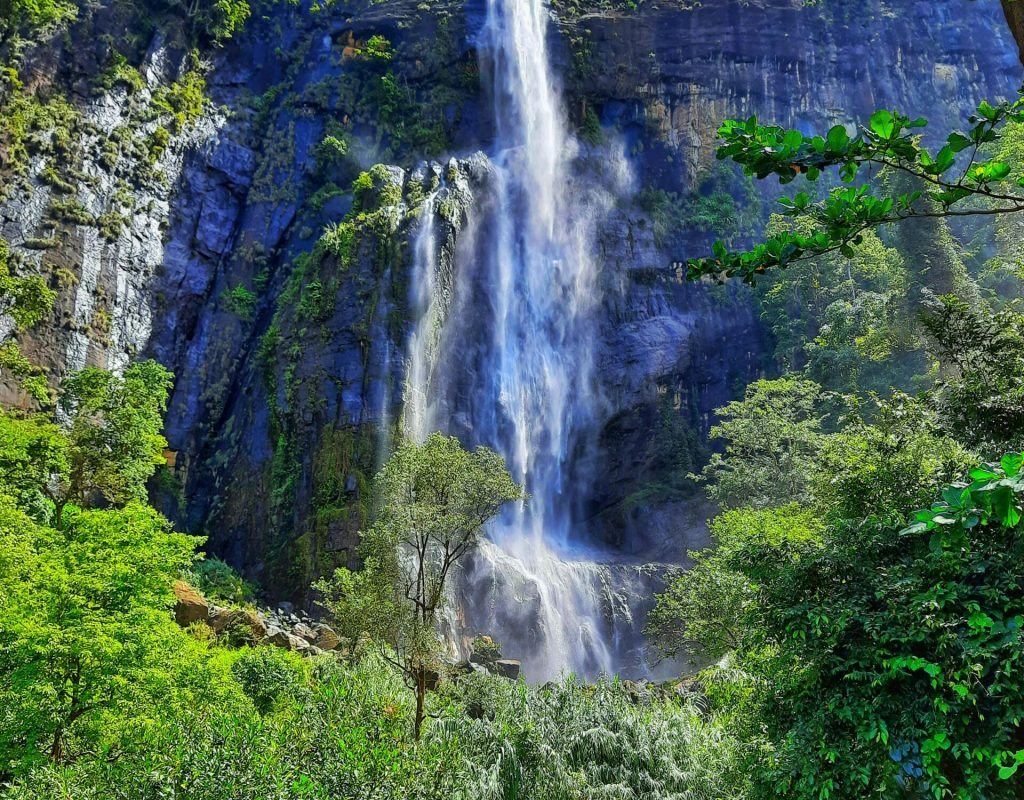
In the morning, you’ll leave Ella for a four-hour trip southwest to the Sinharaja Forest Reserve, a biosphere reserve and UNESCO World Heritage Site. Your stop at the breathtaking Diyaluma Falls will split the drive. Should you so want, you can climb to the second-highest waterfall in Sri Lanka, the 721-foot (220 m) top. The terraced pools at the top allow you to swim from here. Here are some amazing perspectives of the neighboring highlands.
You will resume your journey by following Diyaluma; however, en route to Sinharaja, you will halt once more. About three miles (5 km) from Udawalawe National Park, the Born Free Foundation runs the Udawalawe Elephant Transit Home. This rescue center serves as a midway home for elephants in need, providing them with care until they are ready to return to the wild.
Day 12: Rainforest Trek, Visit to Ahangama
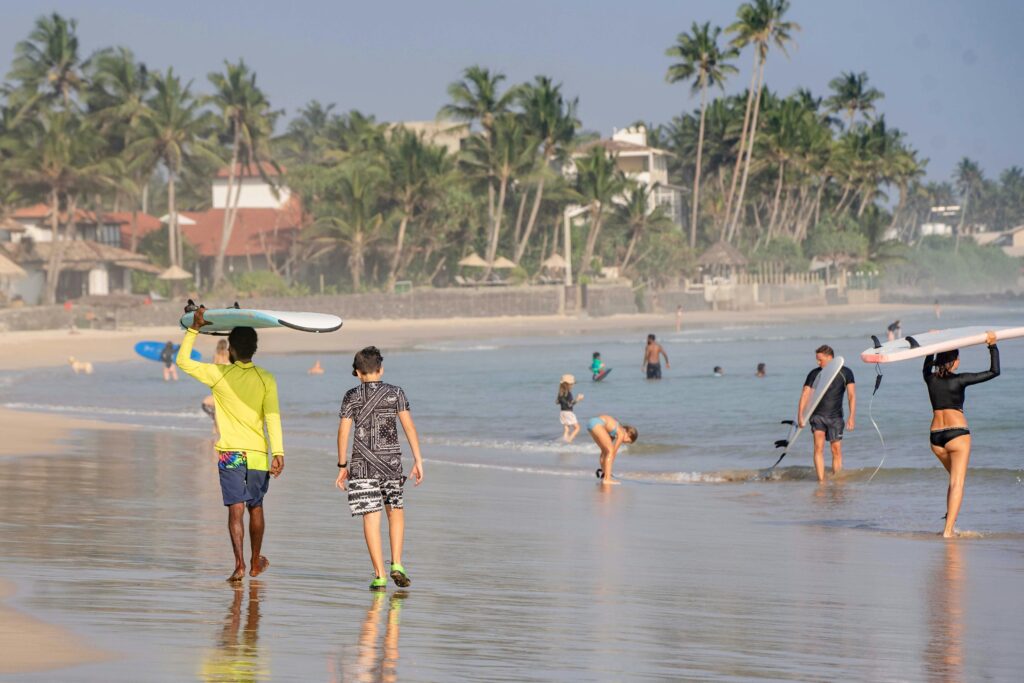
Protecting 34 square miles (88 sq km) of pristine rainforest and its varied animals, Sinharaja is a biodiversity hotspot. Trekking through this ancient rainforest ecosystem, home to rare trees and half of the nation’s indigenous species, such as butterflies, amphibians, and mammals, in the morning can provide a unique experience. Sinharaja hosts twenty of Sri Lanka’s 34 indigenous bird species. The orange-billed babbler and crested drongo are two of the most common. Though there are a few leopards and elephants here, if you’re lucky, you might find monkeys like the purple-faced langur.
Day 13: Whale Watching Mirissa
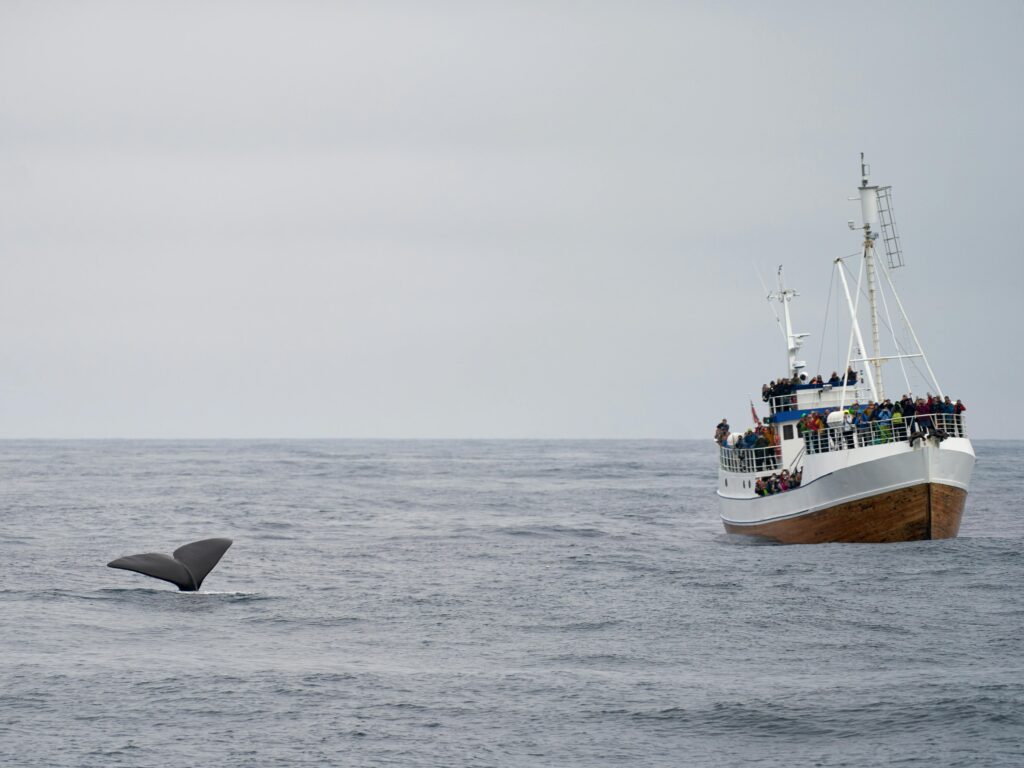
Get ready early and start across the Indian Ocean. This day trip aims to provide a glimpse of the remarkable creatures residing beneath these blue seas. Starting at Mirissa, a coastal hamlet perfect for whale and dolphin viewing between November and April, the area offshore becomes a playground for several whale and dolphin species throughout this season.
Day 14: Ahangama to Galle, Next to the Dutch Fort
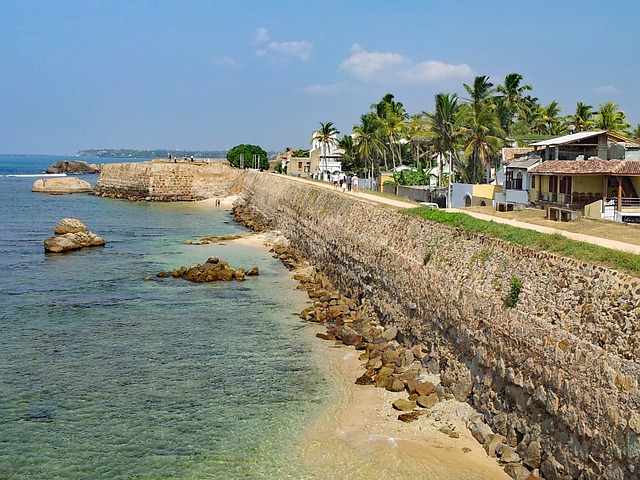
You leave Ahangama in the morning and drive roughly thirty minutes west down the coast to the Dutch colonial town of Galle. Situated on a sizable bay, it stands out as previously the main port of Sri Lanka. Arriving first in 1602, the Dutch settled the island primarily to protect their trading interests in the Indian Ocean. Many well-preserved structures in this little town were Dutch law courts and administrative hubs hundreds of years ago, but they are now cafés, boutiques, and art galleries.
Day 15: Galle to Colombo, Depart
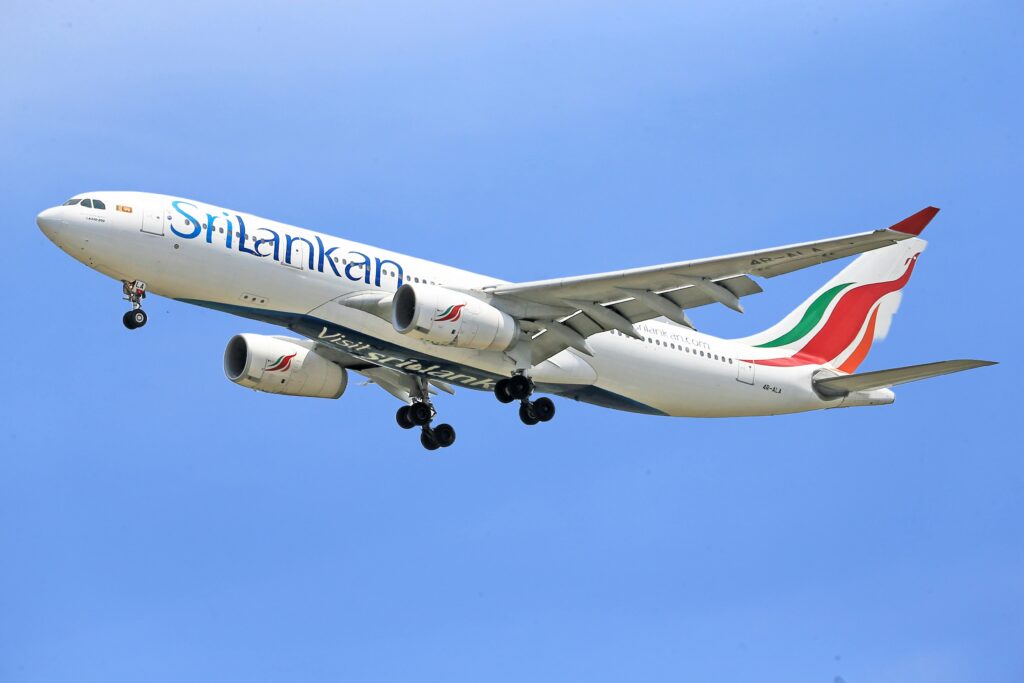
Your great journey across Sri Lanka’s entire length and width is coming to an end. Your driver will pick you up early for the two-hour coast drive from Galle to Colombo airport, where you will catch your flight home. Good travel!

